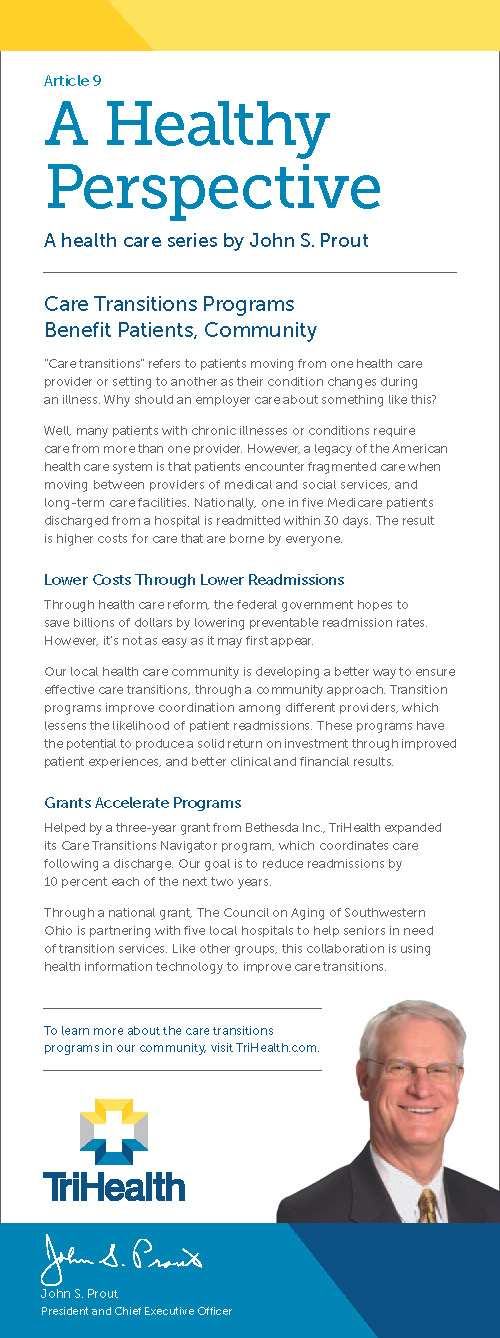Care Transitions Programs Benefit Patients, Community
“Care transitions” refers to patients moving from one health care provider or setting to another as their condition changes during an illness. Why should an employer care about something like this?
Well, many patients with chronic illnesses or conditions require care from more than one provider. However, a legacy of the American health care system is that patients encounter fragmented care when moving between providers of medical and social services, and long-term care facilities. Nationally, one in five Medicare patients discharged from a hospital is readmitted within 30 days. The result is higher costs for care that are borne by everyone.
Lower Costs Through Lower Readmissions
Through health care reform, the federal government hopes to save billions of dollars by lowering preventable readmission rates. However, it’s not as easy as it may first appear.
Our local health care community is developing a better way to ensure effective care transitions, through a community approach. Transition programs improve coordination among different providers, which lessens the likelihood of patient readmissions. These programs have the potential to produce a solid return on investment through improved patient experiences, and better clinical and financial results.
Grants Accelerate Programs
Helped by a three-year grant from Bethesda Inc., TriHealth expanded its Care Transitions Navigator program, which coordinates care following a discharge. Our goal is to reduce readmissions by 10 percent each of the next two years.
Through a national grant, The Council on Aging of Southwestern Ohio is partnering with five local hospitals to help seniors in need of transition services. Like other groups, this collaboration is using health information technology to improve care transitions.
